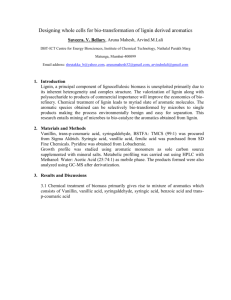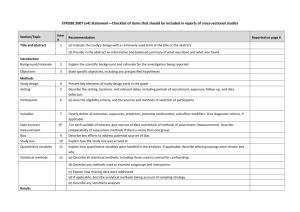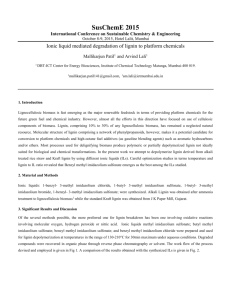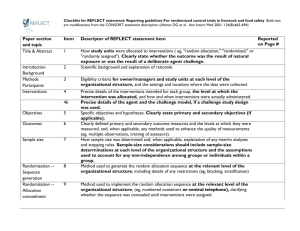grl53492-sup-0001-SuppInfo
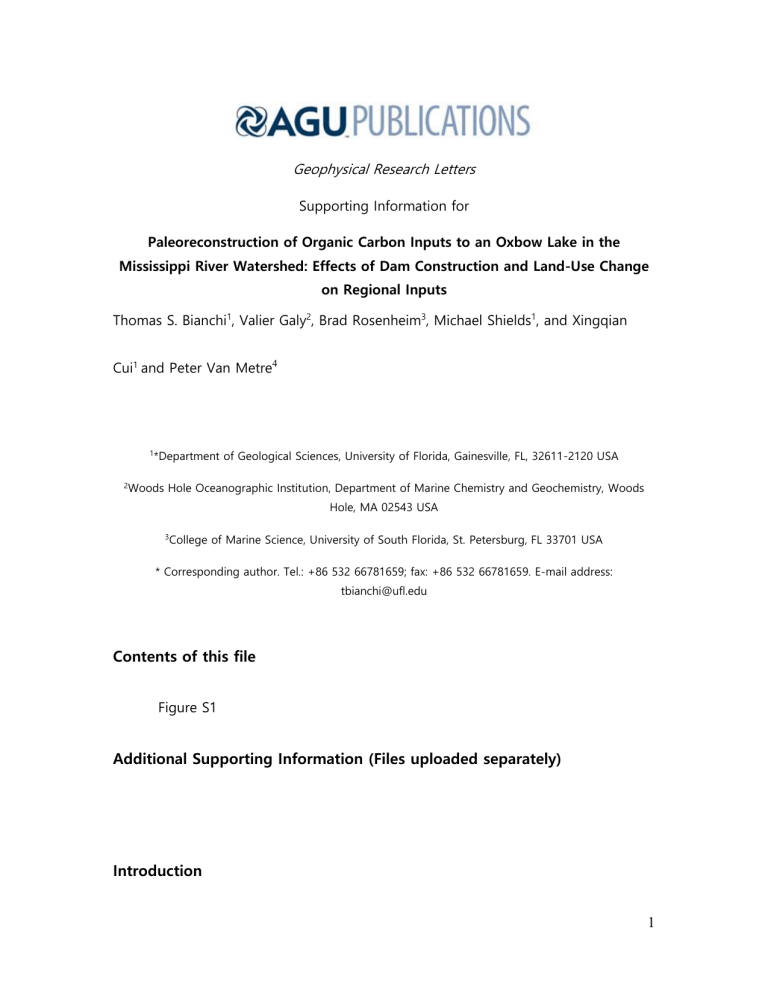
Geophysical Research Letters
Supporting Information for
Paleoreconstruction of Organic Carbon Inputs to an Oxbow Lake in the
Mississippi River Watershed: Effects of Dam Construction and Land-Use Change on Regional Inputs
Thomas S. Bianchi 1 , Valier Galy 2 , Brad Rosenheim 3 , Michael Shields 1 , and Xingqian
Cui 1 and Peter Van Metre 4
1 *Department of Geological Sciences, University of Florida, Gainesville, FL, 32611-2120 USA
2 Woods Hole Oceanographic Institution, Department of Marine Chemistry and Geochemistry, Woods
Hole, MA 02543 USA
3 College of Marine Science, University of South Florida, St. Petersburg, FL 33701 USA
* Corresponding author. Tel.: +86 532 66781659; fax: +86 532 66781659. E-mail address: tbianchi@ufl.edu
Contents of this file
Figure S1
Additional Supporting Information (Files uploaded separately)
Introduction
1
Past work has shown reservoirs to be regulators of carbon cycling have focused largely on the cycling of greenhouse gases (GHG), in particular carbon dioxide and methane [
Tranvik et al.,
2009]. Interestingly, these studies have shown that hydroelectric reservoirs are responsible for the emission of 48 TG C as carbon dioxide and 3 Tg C as methane; this corresponds to approximately 4% of the global carbon emissions from inland waters [
Barros et al.,
2011].
Methods and Materials
Site description, sample collection, and chemical analyses
The core was collected from near the center of the former river channel about 6 km from where a boat channel connects the lake to the Mississippi River. A test core collected closer to the Mississippi River failed to penetrate to the 1937 pre-cutoff sediment, thus in order to obtain a complete sediment sequence with the coring tool available, a site was selected further from the river where sedimentation was assumed to be less rapid. Two cores were collected, one for description and one for chemical analyses. It was assumed that, in this high sediment accumulation rate setting (237 cm in 78 years,
Van Metre and Horowitz
, 2013), lateral variation in sediment chemistry for a given time period would be small, thus, sample collection and analyses focused on vertical (and temporal) discretization in a single core.
Freeze-dried samples collected from the core by
Van Metre and Horowitz
[2013] were used for all sample analyses herein.
Van Metre and Horowitz
[2013] presented several lines of evidence demonstrating that the sediments deposited in Lake
Whittington are representative of the Mississippi River and not the immediate local drainage to the lake.
Lignin analyses
Eight lignin phenols, vanillin, acetovanillone, syringealdehyde, vanillic acid, acetosyringone, syringic acid, p-hydroxycinnamic acid, and ferulic acid, were quantified and normalized to 100 mg-OC (Lambda 8, Λ
8
). Ratios of vanillic acid to vanillin (Ad/Alv) and syringic acid to syringaldehyde (Ad/Als) were used as indices of lignin decay [Opsahl and Benner, 1998]. The lignin phenol vegetation index (LPVI)
2
was calculated as LPVI = ((Syringyls(Syringyls+1)/(Vanillyls+1)+1) x
(Cinnamyls(Cinnamyls+1)/(Vanillyls+1)+1)) and was used to infer the source of lignin
[Tareq et al., 2004].
n-alkanoic acid analyses
n-alkanoic acids were isolated from the saponified total lipid extract by aminopropylsilica-gel column chromatography using 2% formic acid in DCM as the eluent. nalkanoic acid fractions were then methylated at 70 ºC for 2 h using using a 95/5 mixture of methanol of known isotopic composition and 12N HCl. The n-alkanoic acid methyl esters were then further purified by aminopropyl-silica-gel chromatography (using a 4/1 mixture of hexane and DCM as eluent) and silver nitrate-silica-gel chromatography. Quantification was achieved by comparing GC-FID traces of the sample and that of a quantitative standard of n-alkanoic acid methyl esters analyzed under the same conditions. The overall estimated uncertainty on the quantification is ca. 5%.
Compound-specific
14
C analyses
Up to 50 consecutive injections were necessary to accumulate sufficient amounts of compound for radiocarbon dating. The purity of each individual
n
-alkanoic acid methyl ester was checked by injecting a small aliquot on a GC-FID. Pure individual compounds were then loaded into quartz tubes, the solvent evaporated and 150 mg of copper oxide were added to each tube. Using a vacuum line, quartz tubes were evacuated and flame sealed, using cryogenic trap to prevent sublimation of the
n
alkanoic acid methyl esters. After combustion at 850°C for 5 h, the tubes were individually cracked in a vacuum line and the CO
2
cryogenically purified and quantified. After its catalytic conversion into graphite, compound specific 14 C measurements were performed at the National Ocean Sciences Accelerator Mass
Spectrometer facility (NOSAMS, Woods Hole, MA, USA).
The blank contribution used here is a mixture of 0.8
0.4 µg of modern C ( 14 C = 0‰) and 1.0
0.5 µg of dead C
( 14 C = -1000‰). The magnitude of the blank correction varies among the samples, depending on the mass of the measured fractions.
n
-Alkanoic acid radiocarbon
3
contents were finally corrected for C contribution from the added methyl group, using a mass balance equation.
Ramped pyrolysis (Ramped PyrOx)
14
C analyses
Briefly, a mass of sediments containing approximately 100 organic carbon was supported in an oxygen-free quartz reaction tube continually flushed with He. The tube was gradually heated at a constant rate of 5°C per minute, and volatile decomposition products were swept from the tube into an oxygenated reactor over CuO, Ag, and Pt catalyst wires. The resultant CO
2
was measured photometrically (Sable Systems Ca-10) and manometrically, and integrated into liquid nitrogen traps over temperature intervals that generated an amount of
CO
2
appropriate for AMS 14 C determination (>5 µmol CO
2
). Samples were measured for 14 C at NOSAMS using conventional Fe-reduction graphitization techniques. For each sample, 5 radiocarbon measurements were made from 5 different temperature intervals. Weighted arithmetic mean ages calculated from these sets of 5 ages are used for comparison to bulk ages.
References
Barros, N.; J.J. Cole, L.J. Tranvik, Y.T. Prairie, D. Bastviken, V.L.M. Huszar, P. Del Giorgio, and F. Roland (2011), Carbon emission from hydroelectric reservoirs linked to reservoir age and latitude.
Nature Geoscience
,
4
. 593-596.
Opsahl, S., and R. Benner (1998), Photochemical reactivity of dissolved lignin in river and ocean waters,
Limnology and Oceanography, 43
(6), 1297-1304.
Tareq, S. M., N. Tanaka, and K. Ohta (2004), Biomarker signature in tropical wetland: lignin phenol vegetation index (LPVI) and its implications for reconstructing the paleoenvironment,
Science of the Total Environment, 324
(1), 91-103.
Tranvik, L.J.; J.A. Downing, J.B. Cotner, S.A. Loiselle, R.G. Striegl, T.J. Ballatore, P. Dillon,
K. Finlay, K. Fortino, L.B. Knoll, P.L. Kortelainen, T. Kutser, S. Larsen, I. Laurion, D.M.
Leech, S.L. McCallister, D.M. McKnight, J.M. Melack, E. Overholt, J.A. Porter, Y. Prairie,
4
W.H. Renwick, F. Roland, B.S. Sherman, D.W. Schindler, S. Sobek, A. Tremblay, M.J.
Vanni, A.M. Verschoor, E. von Wachenfeldt, and G.A. Weyhenmeyer (2009), Lakes and reservoirs as regulators of carbon cycling and climate.
Limnology and Oceanography.
54
, 2298-2314.
Van Metre, P. C., and A. J. Horowitz (2013), An 80
‐ year record of sediment quality in the lower Mississippi River,
Hydrological Processes, 27
(17), 2438-2448.
Figure S1. Ramped PyrOx decomposition curves for each core depth analyzed for
Ramped PyrOx 14 C. Despite other geochemical changes in the nature of the organic carbon, the curves show no discernible change. With the exception of a slight (but statistically insignificant) increase in T max
for the sample at 188-192 cm, all profiles show similar T max
and inflection points on the rising and falling limb.
5



